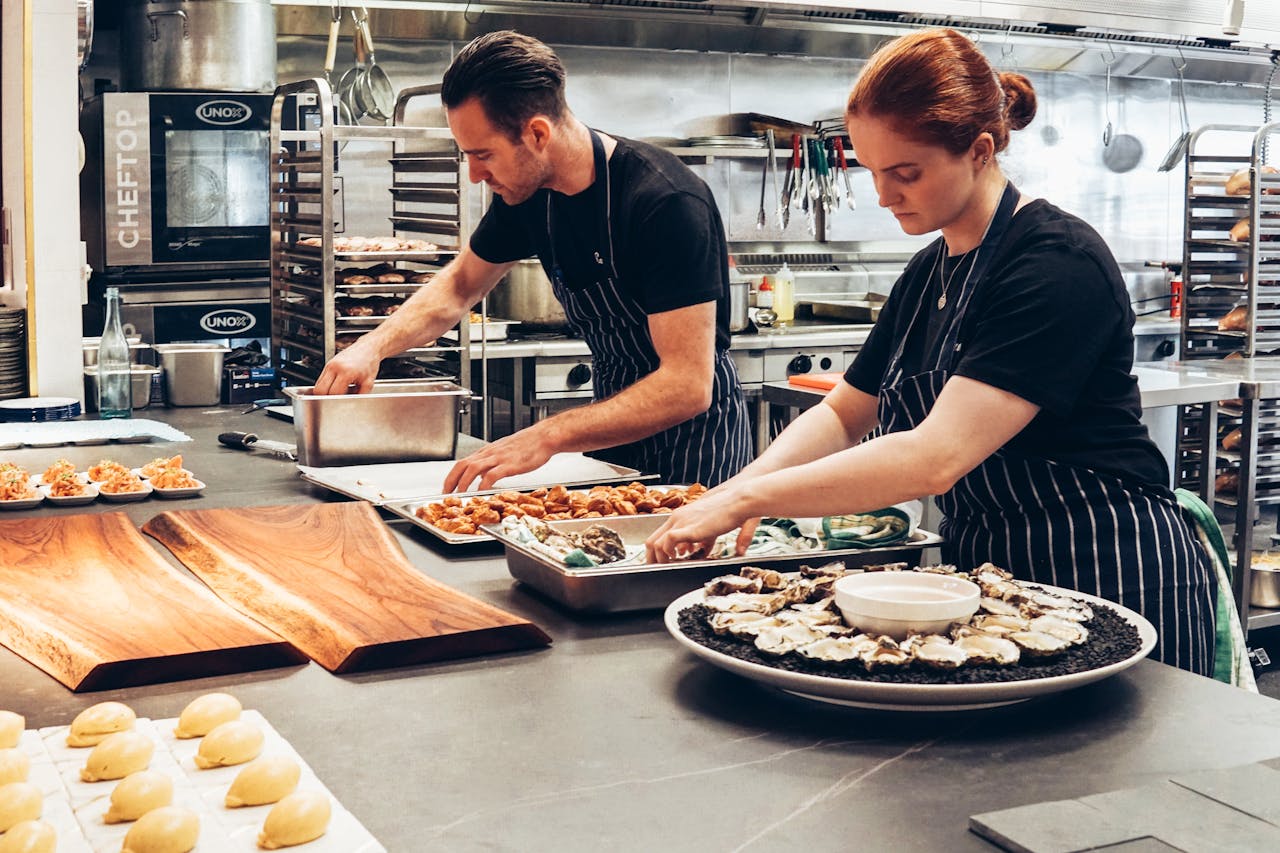Running a catering business can be a dream come true. Who doesn’t have a favourite cafe or coffee van and who can’t think of all the ways you could do it better? But those who are living the dream know that it’s one of the toughest corners of the hospitality industry. In catering, you cannot sit still. Your new look will look stale before you know it. Transformation is a constant process.
Here’s a comprehensive guide to help you check off all the areas of transformation you need to think about.
1. Embrace Technology
Digital transformation and technology in hospitality industry encompasses the following opportunities:
Leverage Digital Tools
- Online Booking Systems: Implementing an online booking system can streamline your reservations, reduce errors, and offer customers a convenient way to book services. Platforms like Bookeo or Eventbrite can be integrated into your website.
- Customer Relationship Management (CRM): Use CRM software like Salesforce or Zoho to manage client interactions, track inquiries, and personalise customer experiences. This can enhance client satisfaction and foster long-term relationships.
- Automated Marketing: Tools like Mailchimp or HubSpot can automate your email marketing campaigns, ensuring consistent communication with your clients about new services, promotions, or events.
Adopt Mobile and Cloud Solutions
- Mobile Apps: Developing a mobile app will allow customers to browse menus, book events, and make payments on the go.
- Cloud-Based Operations: Use cloud-based software for inventory management, accounting, and scheduling. This provides flexibility and real-time access to data from anywhere. It can be a simple as using Google Docs which can be accessed and updated easily by all the relevant team members.
2. Innovate Your Menu
Focus on Trends and Customer Preferences
- Health-Conscious Options: With growing awareness of healthy eating, offering organic, gluten-free, vegan, or low-calorie options can attract a broader clientele.
- Ethnic and Fusion Cuisine: Introduce diverse and innovative dishes that cater to various cultural tastes or blend multiple culinary traditions.
- Seasonal and Local Ingredients: Emphasize the use of fresh, local, and seasonal ingredients. This not only supports local businesses but also appeals to the growing demand for sustainable and farm-to-table dining experiences.
Customize and Personalise
- Custom Menus: Offer tailor-made menu options that can be adapted to specific events or client preferences. This could include themed menus for weddings, corporate events, or parties.
- Interactive Dining Experiences: Provide unique dining experiences like live cooking stations, DIY food bars, or chef’s table events where clients can engage directly with the culinary process.
3. Enhance Customer Experience
Improve Service Delivery
- Training and Development: Invest in regular training for your staff to enhance their skills and ensure they provide exceptional service.
- Professional Presentation: Focus on the aesthetics of your service delivery. This includes the presentation of dishes, the setup of catering stations, and staff dress code.
- Efficient Operations: Optimise your operations to squeeze out more improvements to delivery times.
Build Strong Relationships
- Personalized Service: Take the time to understand your clients’ needs and preferences. Personalised touches can significantly enhance customer satisfaction.
- Loyalty Programs: Introduce loyalty programs or incentives for repeat clients. This can include discounts, special offers, or exclusive services.
4. Expand Your Market Reach
Diversify Your Offerings
- Corporate and Social Events: Extend your services beyond traditional catering to include corporate events, private parties, or large-scale public events.
- Delivery and Take-out: Offer delivery or take-out options, especially for smaller gatherings or clients who prefer dining at home. Partnering with food delivery apps like Uber Eats or DoorDash can help you reach a wider audience.
- Pop-Up Events: Host pop-up events or temporary dining experiences in unique locations. This can generate buzz and attract new customers.
Strengthen Your Brand Presence
- Online Presence: Maintain an active online presence through a user-friendly website, engaging social media profiles, and regular content updates. Platforms like Instagram and Facebook are excellent for showcasing your offerings and engaging with customers.
- Collaborations and Partnerships: Partner with local businesses, event planners, or venues to expand your reach and tap into new customer segments.
- Targeted Advertising: Utilise targeted online advertising through Google Ads or social media platforms to reach specific demographics or geographic areas.
5. Focus on Sustainability
Adopt Eco-Friendly Practices
- Sustainable Sourcing: Source ingredients from local farmers or suppliers who use sustainable practices.
- Reduce Waste: Implement strategies to minimize food waste, such as donating excess food or offering portion-controlled servings.
- Eco-Friendly Packaging: Use biodegradable or recyclable packaging for your takeout and delivery services.
Promote Your Green Initiatives
- Communicate Your Efforts: Clearly communicate your sustainability practices to customers. This can be a significant selling point as more consumers seek environmentally responsible businesses.
- Certifications and Awards: Pursue certifications or awards for sustainability, which can enhance your credibility and appeal to eco-conscious clients.
6. Financial Management and Planning
Budgeting and Cost Control
- Monitor Expenses: Keep a close eye on your expenses, from ingredient costs to labour. Use financial software like QuickBooks to track and manage your budget effectively.
- Pricing Strategy: Develop a pricing strategy that covers your costs while remaining competitive. Consider offering different pricing tiers or packages to cater to various budgets.
Invest in Growth
- Reinvestment: Allocate a portion of your profits to reinvest in your business, whether for new equipment, staff training, or marketing.
- Funding Opportunities: Explore funding options such as small business loans, grants, or crowdfunding to support your expansion or innovation projects.
Conclusion
Transforming your catering business requires a positive attitude to modern technology, adapting to evolving market trends, and enhancing customer experiences. By focusing on innovation, expanding your services, and maintaining a strong, sustainable brand presence, you can position your business for long-term success and growth in a competitive market.

